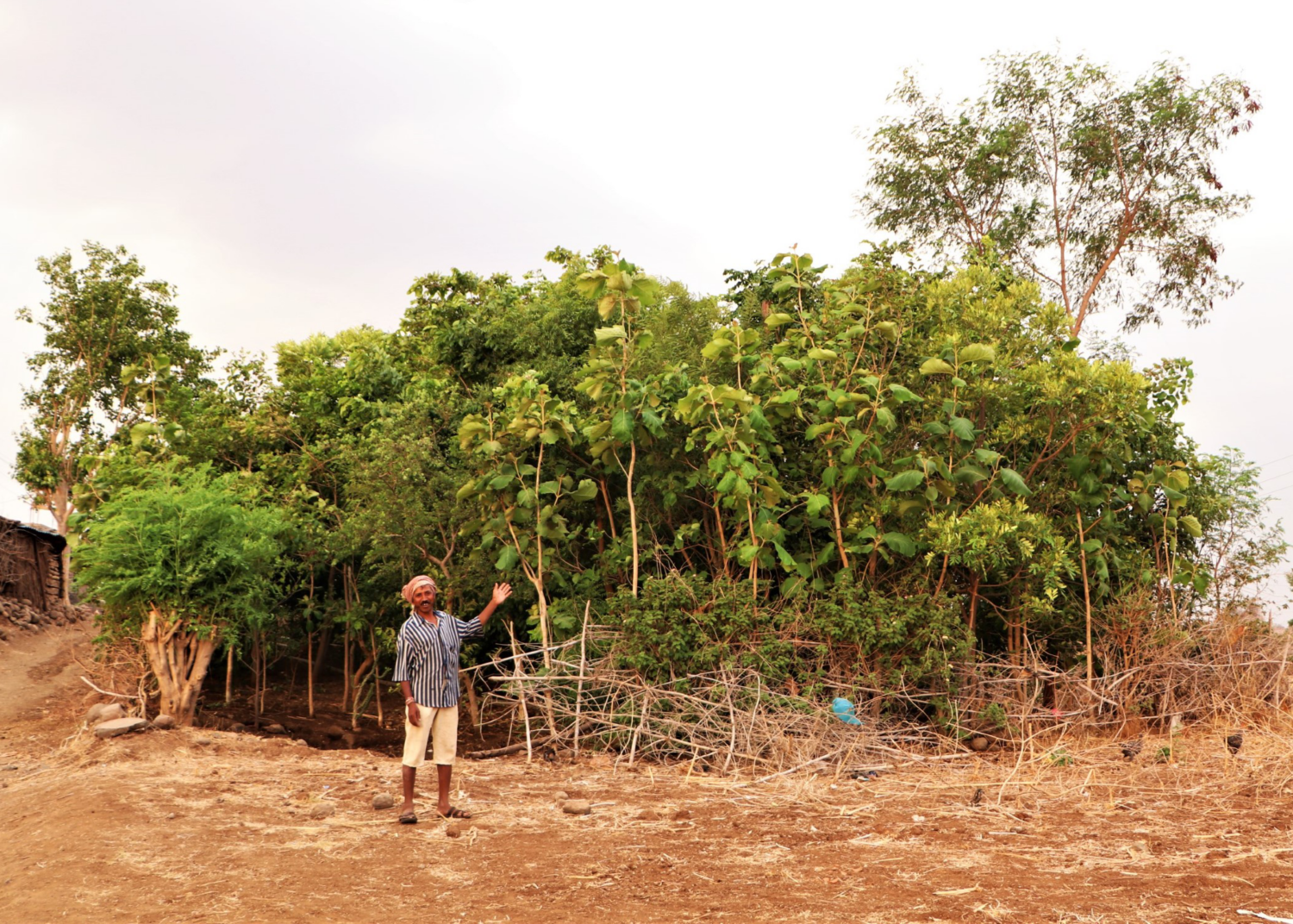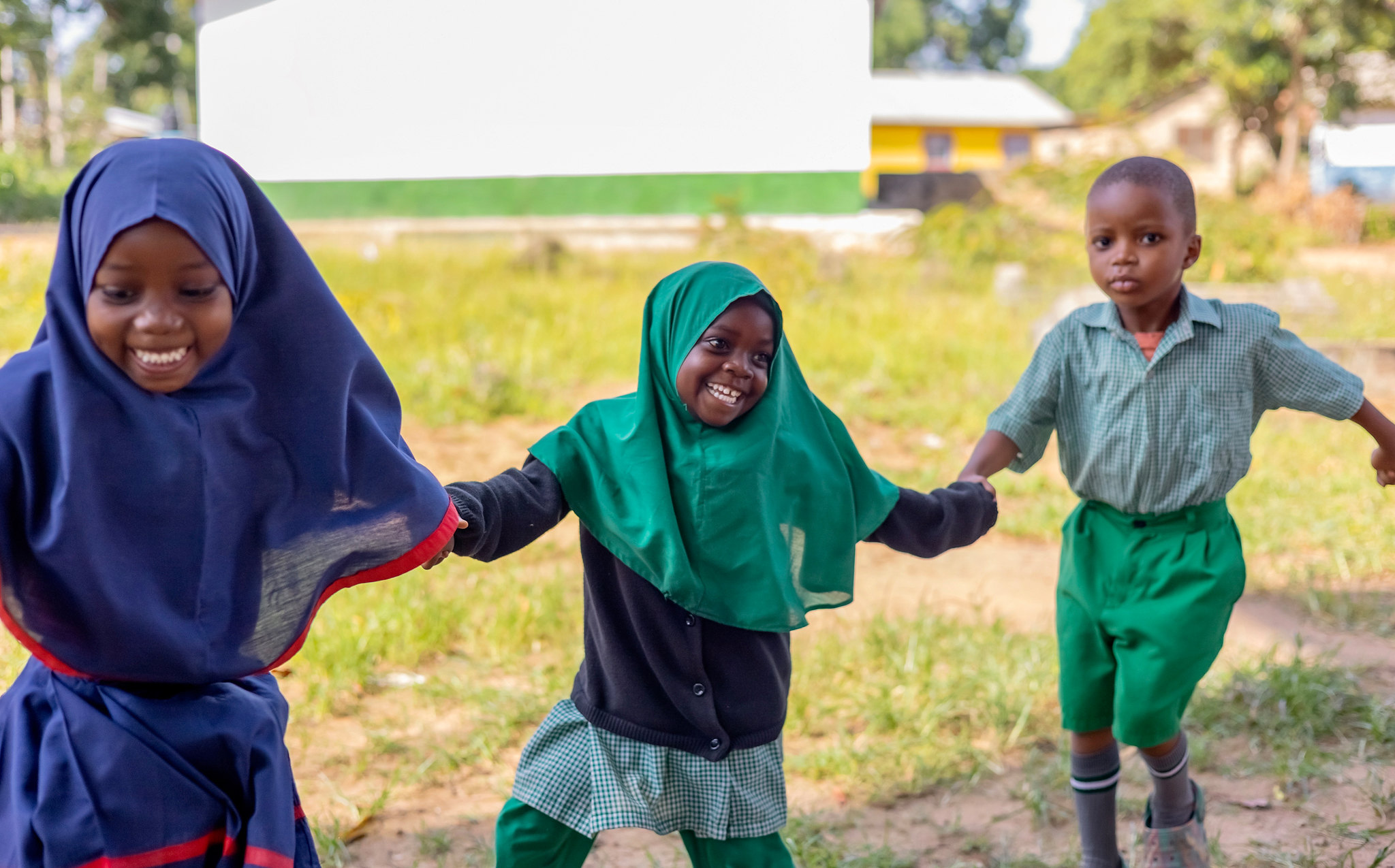
What are Nature-based Solutions?
Over the last couple of years, the term ‘Nature-based Solutions’ or ‘NbS’ has increasingly entered the vocabulary of those working in the environment and development space. NbS are widely considered to be an important component in achieving sustainable development and addressing climate change. But what are NbS?

Despite broad agreement of the role NbS can play, there is still need for a more common understanding of what they are. This is partly because, until very recently a global definition of NbS did not exist.
Before the term NbS started being commonly used, various closely related terms were already in use, such as ecosystem-based approach, ecosystem-based adaptation, green infrastructure and others. The concept of NbS was developed and evolved through the inputs of various actors with the International Union for Conservation of Nature (IUCN) leading the way on defining the term.

In March 2022, the Fifth Session of the United Nations Environment Assembly (UNEA-5) agreed on the following definition of NbS:
‘Actions to protect, conserve, restore, sustainably use and manage natural or modified terrestrial, freshwater, coastal and marine ecosystems, which address social, economic and environmental challenges effectively and adaptively, while simultaneously providing human well-being, ecosystem services and resilience and biodiversity benefits.’ [1]
At the heart of NbS is the idea that to address the world’s environmental and societal challenges, we must work with nature and not against it. Therefore, NbS can be thought of as an umbrella term that describes a range of ecosystem related approaches and practices that address both societal and biodiversity issues and provide benefits for the wellbeing of humans and of nature.

Examples of NbS
So, what are some clear examples of NbS, including from our work at AKF?
Let’s first look at GROW, AKF’s microforest initiative. Microforests are small, dense, and fast-growing forests that thrive in both urban and rural areas. What sets GROW microforests apart is that they are driven, grown and owned by community members—especially farmers, women, and young people. These microforests are planted with a variety of vegetation that provides both environmental and community benefits. They include fruit trees, traditional medicinal plants, and vegetables that supplement diets and boost household incomes. At the same time, they enhance biodiversity, sequester carbon, filter pollutants, regulate water flow, and create micro-climates that offer protection from extreme weather. By strengthening the resilience of both people and nature, microforests play a crucial role in the fight against climate change. AKF has supported the establishment of over 900 microforests across Africa and Central and South Asia with a focus on improving livelihoods and quality of life.
Regenerative farming offers another example. Regenerative farming is a way in which food can be produced more sustainably and, at the same time, help farmers adapt to the effects of climate change. It consists of a combination of practices that restore soil, water, air and biodiversity resources and foster their ecosystem services while also boosting productivity and incomes. Across our geographic focus areas, AKF supports farmers to transition to regenerative farming through practices which incorporate NbS such as use of bio-pesticides and fertilisers and diverse crop associations. The Zanatany System, developed by AKF and small holder farmers in Madagascar, applies regenerative farming practices to rice production. It is less labour intensive for farmers, especially benefitting women, and increases rice yields while supporting healthier ecosystems.
These NbS do two things:
- They address societal needs such as food insecurity, poverty and low incomes, soil degradation and adaptation to climate change, and
- They enhance biodiversity and the ecosystem services that communities depend on.

Implementing and scaling NbS can often be challenging in practice and we can learn from various examples. AKF’s NbS initiative in Mozambique has many lessons to offer. The Mel Do Mar project supported women to engage in beekeeping activities while protecting and rehabilitating mangroves.
For such a nature-based intervention, it was important that in between harvesting seasons, community members had other sources of income as they waited to harvest and sell their honey. This is why this NbS project was designed and intended to be part of a broader framework of interventions. The project therefore, trained participants in financial literacy and supported them to form savings groups and rotating credit schemes. Through these schemes, the members were able to re-invest and increase income generated from their first honey harvest to further diversify their income streams.
Other examples of NbS include:
- Natural flood management using mechanisms that can slow down the flow of water and improve water quality such as re-meandering rivers, tree planting, planting of hedgerows across slopes and creation of new wetlands.
- Urban forests and green spaces to increase biodiversity, reduce heat stress and control flooding.
- Seagrass restoration for coastal protection and climate mitigation.
To support implementation of NbS, IUCN developed a standard to help assess the “extent to which a proposed solution qualifies as an NbS” and important parameters that should be considered in NbS design. The IUCN Global Standard for Nature-based Solutions provides a framework for verification, design and scaling up of NbS. In practice, not all interventions will fully comply with all the criteria identified by the standard. However, it can serve as a useful tool for reflection and refining of interventions.

Nbs and greenwashing
As we’ve seen, not all interventions can be termed as NbS. Being clear about what we mean by NbS is important especially with regards to NbS for climate action. This is because the term has often been misused by some actors to describe actions that simply offset emissions, as opposed to actively preventing them. Often these offsetting actions do not take into account impacts on communities and the wider ecosystem. Rather, they allow the continuation of the business-as-usual scenario – otherwise known as greenwashing.
Using the term incorrectly also leads to the watering down of NbS, taking away credibility from solutions that are actually working for both people and planet. This has wide reaching implications, particularly for funding.

Thriving with nature
Reaching and applying a consistent understanding of NbS and what we would like to get out of them supports the design and implementation of meaningful interventions that deliver true impacts for both communities and nature. It also enables us to develop the right NbS metrics to measure impact, capture best practices and replicate and scale-up interventions.
More often than not, NbS need to be incorporated as part of a wider set of sustainable solutions. AKF’s decades-long experience tells us that the most successful interventions, including NbS, are those co-developed with communities, blending science and global best practice with traditional and indigenous knowledge.
Author: Sharon Ngetich, Climate Specialist at the Aga Khan Foundation
What to go deeper?
Related News & Stories


AKF to restore 226 hectares of mangroves in Kenya’s Gazi Bay

More than a room: Safe spaces for girls in Mozambique

AKF and Bezos Family Foundation expand partnership to boost early childhood development in Asia and Africa

On the road to save lives: Mobile health clinics in Mozambique

AKF launches AgroVida programme to improve nutrition and food security for 125,000 people in northern Mozambique

Support our work Your donations are helping us build a future where we all thrive together.